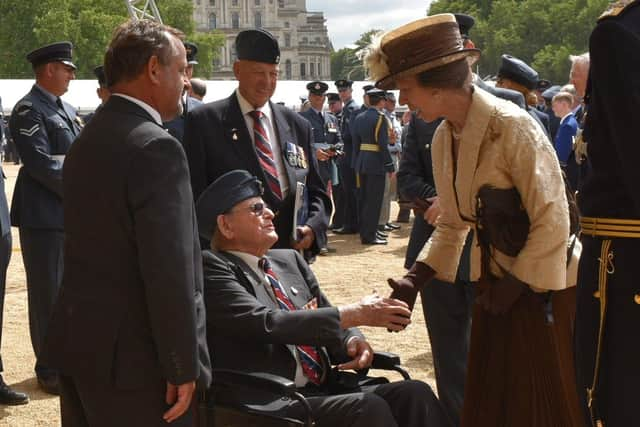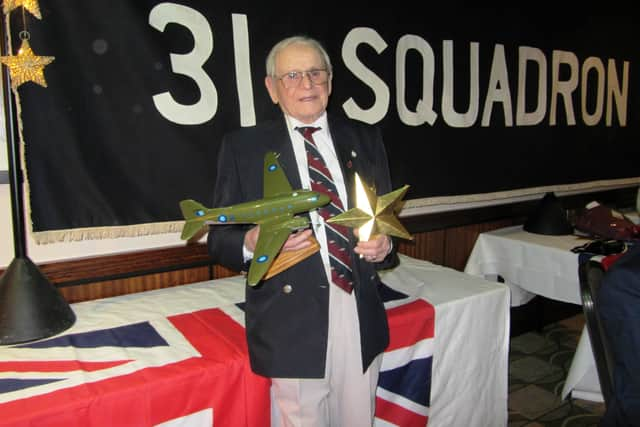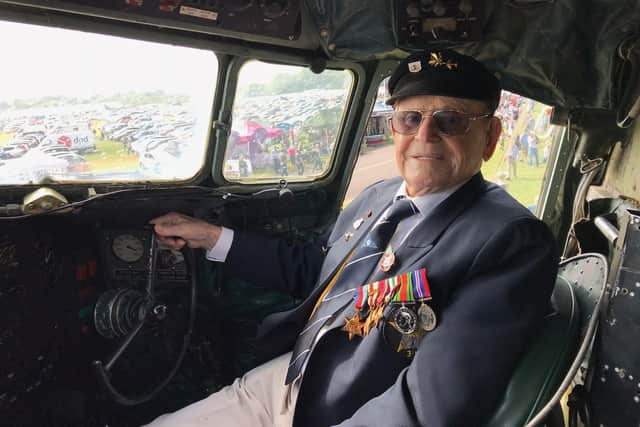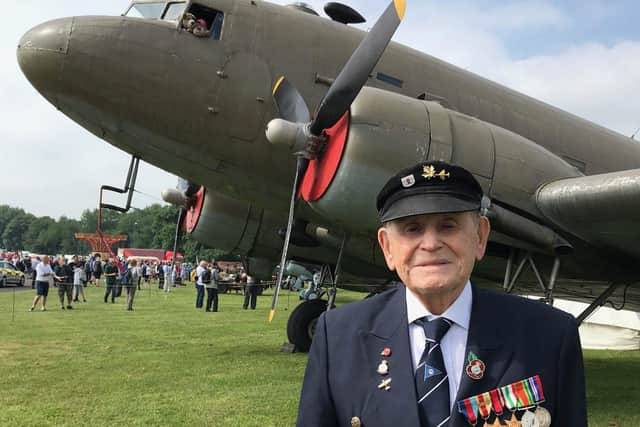Tributes to Peterborough war hero Eric


Cyril ‘Eric’ Rollings was behind the controls of Dakotas and Hurricanes during the Second World War.
Eric, a grandfather, died in Eye last week aged 98, leaving his two daughters, Sally and Nita, grandson Ben and wife Daphne.
His funeral will take place in Eye on Monday, December 23.


Advertisement
Hide AdAdvertisement
Hide AdAs a youngster Eric dreamed of joining the RAF, and would stand at the fence of RAF Tangmere watching planes take off and land - however, his mum wouldn’t let him join - his father died after being injured in the First World War.
However his choirmaster convinced his mother that he needed to go and she could not really hold him back. He joined the RAF in 1936 as a boy entrant at RAF Holton.
He graduated as an Armourer fitter and was posted to RAF Tangmere on 43 Squadron, who had Mk 1 Hurricanes. He became the personal armourer to Flying Officer Peter Townsend, who was the first to shoot down an enemy aircraft over British soil (after he requested Eric to shorten the firing distance on his guns), when at RAF Acklington during the Battle of Britain
In 1940 Eric trained in Salisbury, South Africa, to become a Hurricane pilot, and he served on South African One Squadron.


Advertisement
Hide AdAdvertisement
Hide AdTwice he had crash landings due to faulty under carriages, and following ear damage when he got too close to an exploding bomb, he had to return to ground duties
In the first crash he only had one wheel down when he cut his head on the gunsight. After the medical officer had stitched him up while he sat on a 45 Gallon drum he was called before the Squadron Boss, who told him that in the Royal Air Force there is no such thing as an accident, and someone was always to blame.
After the second crash, where there was no under carriage at all, he was called before the Station Commander - who was an RAF WW1 pilot who said ‘Rollings whose side are you on?’ (or words to that affect).
He was then posted to aircraft rescue and recovery, where he and his team often worked behind enemy lines, decommissioning aircraft and armaments. He served in the Desert, Sicily and Italy campaigns, and having got to the top of Italy, he saw a station order asking for twin engine aircraft pilots and thought this was his chance to get back to England and join the D Day Normandy invasion.


Advertisement
Hide AdAdvertisement
Hide AdHowever he wasn’t sent back to England, but was sent to Burma onto 31 Squadron, so during 1944 and 1945 Eric flew the Dakota and recalled flying at hundreds of feet rather than the usual 2,000 feet, dropping supplies into Kohima over the tennis courts and coming away with many small arms damage from the Japanese.
He often had to land on ‘very tight’ airfield strips cut in the jungle which became ‘extremely tight’ when they were overloaded with wounded soldiers from the 16th Army, or when repatriating Prisoners of War.
He recalled having dropped supplies by parachutes, and then when going in with Christmas rations, on the ground the 16th army had laid out ‘Merry Christmas RAF’ using the parachutes.
Whilst in Burma he met Vera Lynn and also stood before Lord Mountbatten when he told them ‘The Spitfire may have won The Battle of Britain but the Dakota won the Battle of Burma.’


Advertisement
Hide AdAdvertisement
Hide AdAfter leaving the RAF in 1946 Eric had a varied career within engineering sales, eventually owning a manufacturing equipment company. He was a member of Peterborough Yacht Club and Longthorpe Bowls Club and for the last six years he has been residing at the Spinney in EyeThe funeral service will take place at St Matthew’s Church, High Street, Eye at 1.45pm on Monday, December 23. Family flowers only, any donations to the RAF Benevolent fund.